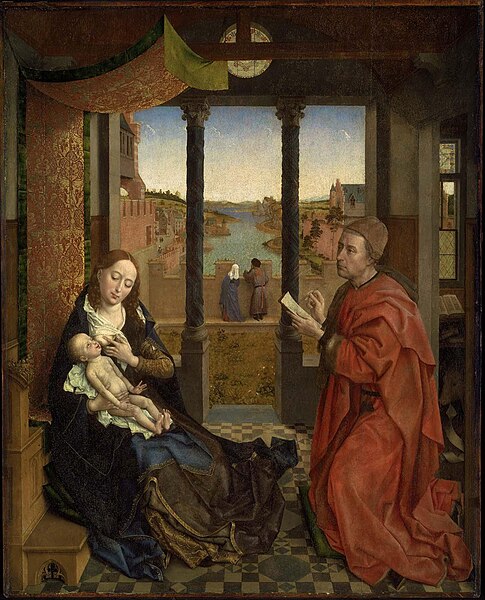The Guild of Saint Luke was the most common name for a city guild for painters and other artists in early modern Europe, especially in the Low Countries. They were named in honor of the Evangelist Luke, the patron saint of artists, who was identified by John of Damascus as having painted the Virgin's portrait.
Jan Gossaert, St. Luke Painting the Madonna (c. 1520–1525), Kunsthistorisches Museum, Vienna.
Saint Luke Drawing the Virgin, c. 1435–1440. 137.5 x 110.8cm. Museum of Fine Arts, Boston. This was the classic subject for paintings given to the guilds
The Governors of the Haarlem Guild of St. Luke in 1675. Jan de Bray painted himself second from the left. Surprisingly, fewer such group portraits exist for painters than other Guild occupations.
Printed invitation to other chambers of rhetoric by the Antwerp Violieren, for a landjuweel event, lasting 19 days, in 1561
Luke the Evangelist is one of the Four Evangelists—the four traditionally ascribed authors of the canonical gospels. The Early Church Fathers ascribed to him authorship of both the Gospel of Luke and the Acts of the Apostles. Prominent figures in early Christianity such as Jerome and Eusebius later reaffirmed his authorship, although a lack of conclusive evidence as to the identity of the author of the works has led to discussion in scholarly circles, both secular and religious.
Miniature of Saint Luke by Armenian manuscript illuminator Toros Roslin, 13th century.
Luke the Evangelist
Print of Luke the Evangelist
James Tissot, Saint Luke, Brooklyn Museum








